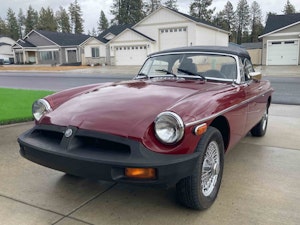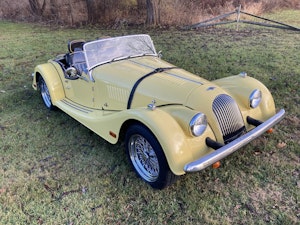Media | Articles
Flying Aces
Fighter pilots have three guiding rules when it comes to practicing their craft: “Look good, don’t die and if you’re going to die anyway, look good.” Cinched down tight in the front cockpit, the big radial piston engine spraying tiny oil droplets on the windscreen, I’m not sure how good I look. All I can contemplate is the sound of the seven-cylinder engine at full blast penetrating my brain as we begin the big takeoff roll. It is the moment of no return. The draft from the propeller blasting my face is substantial, but nothing like the wind rush around my “Rocky the Flying Squirrel” headgear as the runway becomes a blur.
Seconds later, we’re airborne as the Stearman’s two yellow wings grab hold of the air and ride it upward. A checkerboard of beautiful brown Illinois cornfields unfolds below, contrasted by a royal blue sky. Any jitters over my safety vanish as I enjoy the novelty of sticking my hands out of the cockpit at 90 mph.
As we do a lazy banked turn back over the runway, I look back over my left shoulder and see the breathtaking sight of another Stearman climbing fast. He takes a shorter radius turn to bank up against us. It is followed by a third that is just lifting off the runway. Since we only have three Stearmans available this day, our fourth plane is a low-wing AT -6 trainer carrying our photographer, Joe Vaughn.
An offer I couldn’t refuse…
So what in the devil am I doing formation flying in a Stearman? You can blame David Burroughs. Readers of this magazine will know David well as the originator of the Bloomington Gold Corvette Show as well as one of the leading advocates of survivor cars. But there is another dimension to David that we didn’t know. He’s a former commercial pilot and devotes much of his time to formation flying and aerobatics. David owns a Stearman, one of those venerable ‘30s vintage biplanes that trained the bulk of the fighter pilots who helped win World War II.
Once David tendered an invitation, it took no convincing on my part, Still, I was thinking to myself, formation flying in biplanes? Wait a minute. Aren’t those guys barnstorming daredevils?
Marketplace
Buy and sell classics with confidence
It didn’t help at breakfast on the morning of our flight when David uttered, “What we are about to do is extremely dangerous,” as he clutched a cup of hot tea and an English muffin in a local restaurant.
But if you know David, he is clearly someone who exudes calm, planning and perfection. So do his flying mates, all of whom have been flying since they were teenagers. People like the new president and CEO of the Experimental Aircraft Association, Rod Hightower, who brought both his Stearman and an AT -6 low-wing trainer. Then there was John Lohmar, a Reno Air Race veteran (who finished third in 2010in his AT -6) and now is a captain for American Airlines. Next was John Rettick, who flies a Boeing 757 as captain for FedEx but is also a military pilot with experience in everything from F16s to A4s. Finally, there is Doug Watanabe, a St. Louis dentist who has been flying all his life and does this just for fun.
In the sky, you take no chances
On the morning of our flight, our group assembles in a room at the Bloomington-Normal Airport where we spend two solid hours going through our plans for the day, known as the briefing. Then, we head to the airplanes. After gassing everybody up, John Lohmar helps belt me into the cockpit. As he cinches down my parachute, he gives me the standard disclaimer.
“Chances are you won’t need this,” he says. “But if I say bail, release your main harness and get out, sit on the edge of the cockpit and then roll off the wing and make sure you’re clear of the airplane. Then give this big D-ring a hard yank.”
Uh, right.
As we taxi out to the runway, we have to wait for a Delta commuter jet to clear. Then it’s time to take off. Once we are airborne, I’m surprised at how much these planes move around in the air, and once again I marvel at the skill of these pilots to keep them as close as they are without incident.
Formation flyers conduct a series of standard maneuvers that are like the compulsories in figure skating. The first is a “diamond” formation followed by “finger four,” where the lead plane is rear flanked by one plane to the left rear and two planes to the right. Next is an “echelon” formation where the leader flies on the left side and the three following planes flank it to the right rear. Finally a “trail” maneuver has all four planes lined up in a tight nose-to-tail formation.
Competition flying involves performing these or other maneuvers perfectly. “The lead plane is the CEO of the flight,” Burroughs says.
“What the other pilots do is based on his lead. The #2 plane sets the spacing, and the job of the #3 and #4 planes is to match #2.”
David is proud to point out that his group has won eight national formation flying championships in Stearmans.
Land with care
How tough is it to fly a Stearman? Burroughs describes it as a dichotomy. “Once the airplane is off the ground, it’s wonderful to fly. It feels good and solid. But it is one of the most difficult airplanes in the world to land — on purpose. It was designed with a very narrow stance of the fixed landing gear, much narrower than a P51 Mustang. Even more challenging is the fact that the Stearman is top heavy. The fuel tank is located in the top wing and carries 46 gallons. So if you are not in perfect position when landing, you can easily swap ends — also known as a “ground loop.”
We sweep down over the cornfields toward a little grass airstrip called “Barnstorm,” where David lives, for a short break. Lohmar brings the Stearman down in a flawless, pillow-soft landing.
As the afternoon progresses, we see clouds to the north, a sign of a rain front moving in. Time to head back to Bloomington. Once airborne again, the thrills aren’t quite over as I see the two planes ahead of us go into a steep climb. I can’t let them get away. Doing my best impression of World War I ace Eddie Rickenbacker, I draw a bead on the yellow biplane ahead only to see it climb fast and bank hard to the right. In hot pursuit, I smoothly draw back the stick and climb right after him. Reeling him in, I squeeze off multiple rounds of my .30 caliber machine gun and watch the flaming wreckage plummet to the ground. In my dreams, at least.
In reality, we’ve just done a maneuver called the “tail chase,” where everything was under the complete control of our able pilots, who manage not only to look good, but to bring their exhilarated guest passenger back safely to tell the story.
***
To see this article in its original format, view the pdf version of the Spring 2011 issue of Hagerty magazine










